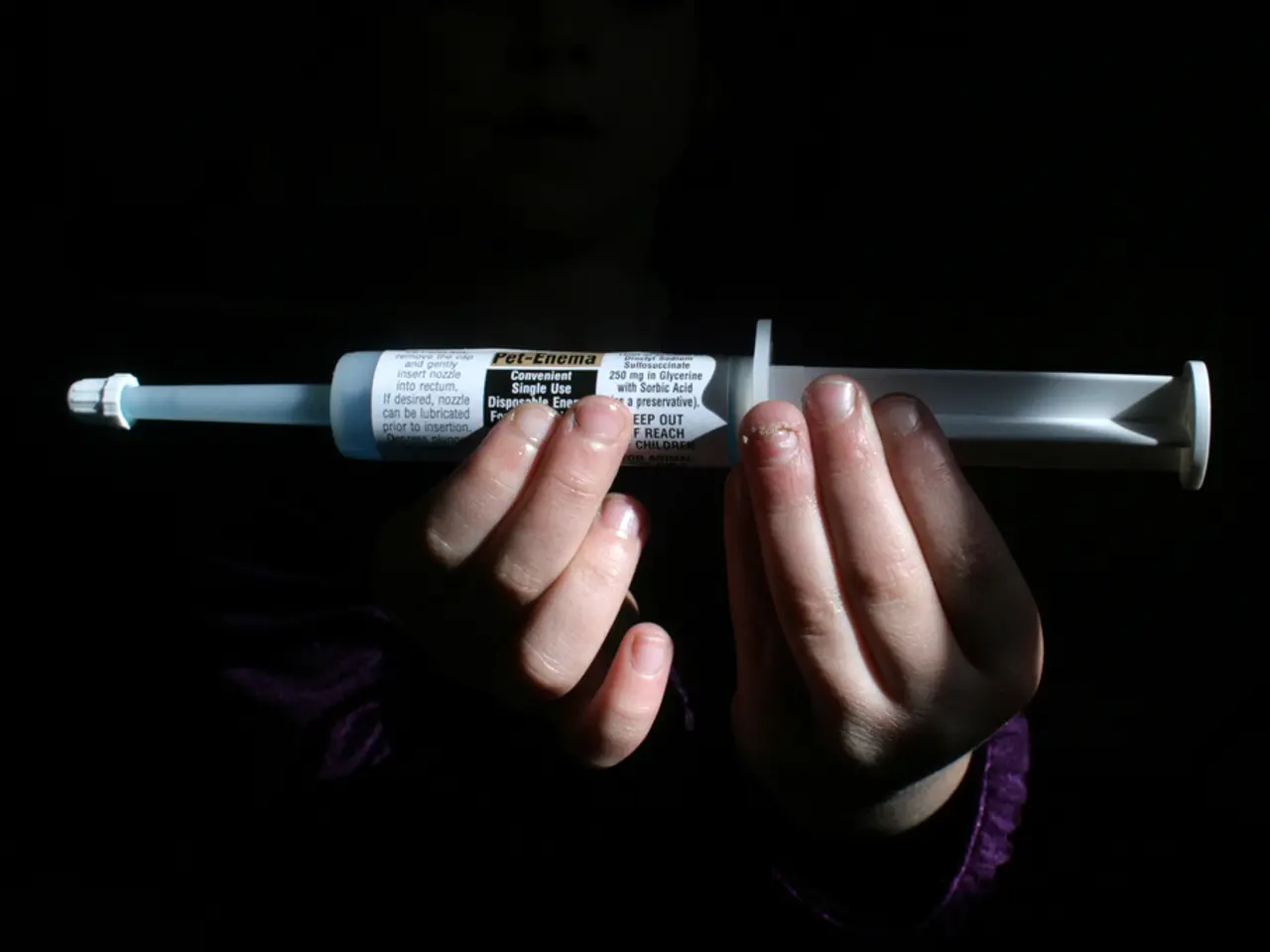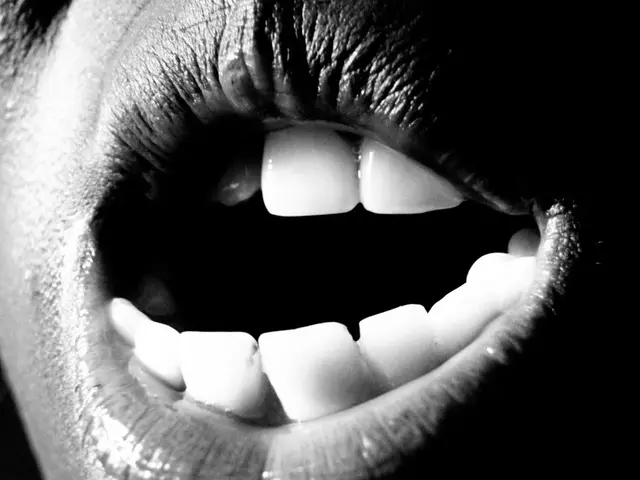Cold Hands in Anxiety: Causes and Relief Strategies
In everyday life, anxiety can manifest in various ways, one of which is the sensation of cold hands. This article aims to shed light on this common symptom and provide practical strategies for managing it.
Anxiety can present itself in different degrees, ranging from mild to severe states. One lesser-known symptom is the coldness in the hands, a result of the body's "fight or flight" response. This response, triggered by adrenaline, causes the blood vessels in the extremities to constrict, reducing blood flow to the hands and feet to conserve energy for vital organs [1][4][5].
This mechanism is part of the sympathetic nervous system activation, which prepares the body to respond to perceived danger by redirecting blood from the peripheral areas to major muscles and vital organs. However, in modern, non-life-threatening situations causing anxiety, this reaction can result in chronic or repeated cold hands, which can be uncomfortable or distressing [1][4][5].
To combat cold hands caused by anxiety, several strategies can be employed:
- Stress Reduction and Relaxation Techniques: Practicing grounding exercises, deep breathing, and mindfulness helps to reduce sympathetic nervous system overactivity. For example, slowly filling and emptying the lungs can calm the adrenaline response and improve circulation to the hands [4].
- Physical Activity: Exercise, such as walking, especially uphill, can help burn off excess adrenaline and improve overall circulation [4].
- Hydration: Maintaining adequate hydration supports proper body function and can reduce anxiety symptoms that contribute to the cold sensation [2].
- Cooling and Re-warming Techniques: Splashing cool water on wrists or face can signal to the body that it is not overheated or under immediate threat, helping to moderate the fight or flight response and reduce extremity vasoconstriction [2].
- Addressing Underlying Circulation Issues: If anxiety is accompanied by poor circulation due to lifestyle factors (e.g., sedentary habits, smoking) or medical conditions (such as anemia, high cholesterol, or heart problems), addressing these through medical consultation and lifestyle modification is important [1].
- Avoiding Cold Exposure and Managing Emotional Stress: Since emotional stress can trigger episodes similar to Raynaud’s phenomenon (where blood vessels constrict excessively in response to cold or stress), learning techniques to manage both temperature exposure and anxiety is beneficial [3].
If symptoms persist or are severe, consultation with a healthcare professional is advisable to rule out other causes of poor circulation or to discuss pharmacological treatments if appropriate [3][1].
It's essential to remember that this article is informative and does not diagnose or recommend treatment; it encourages seeking help from a psychologist for personal cases. Having a healthy environment, such as friends, family, self-help groups, sports institutions, can provide emotional support to cope with anxiety moments.
Mindfulness, a therapeutic practice that emphasizes the present, removing consistency to intrusive thoughts, can help manage anxiety. Performing mindfulness requires being in a relaxed environment that allows a high level of concentration in breathing.
Other mental health disorders such as depression, bipolarity, obsessions, and chronic conflicts can influence the appearance of body symptoms associated with anxiety. Writing down thoughts, behaviors, and emotions that encourage cold hands due to anxiety can help release nervous tension and provide a new perspective on problems.
Work stress can increase the presence of anxiety symptoms, and the cold in the hands for anxiety can be accompanied by symptoms such as tremors, vomiting, nausea, excessive sweating, broken breathing, skin color change, palpitations, and dry mouth.
The American Psychiatric Association's 5th edition of the Diagnostic and Statistical Manual of Mental Disorders is a reference for understanding anxiety. A study by Sierra, Ortega, and Zubeidat (2003) differentiated between anxiety, anguish, and stress.
Lastly, going to psychological therapy can provide tools to reduce the intensity of anxiety symptoms and find alternative solutions. If your hands get cold when you are nervous or worried, it is likely to be related to anxiety. Physical activity can decrease the activity of the central nervous system, which is associated with an increase in alert levels, helping to alleviate cold-handed symptoms.
References:
[1] Mayo Clinic. (2021). Anxiety disorders: Symptoms and causes. Retrieved from https://www.mayoclinic.org/diseases-conditions/anxiety/symptoms-causes/syc-20374772
[2] Healthline. (2020). 9 ways to warm up cold hands and feet. Retrieved from https://www.healthline.com/health/cold-hands-feet#1
[3] Harvard Health. (2018). Cold hands and feet: What's causing them and what to do about it. Retrieved from https://www.health.harvard.edu/staying-healthy/cold-hands-and-feet-whats-causing-them-and-what-to-do-about-it
[4] Psych Central. (2021). 10 ways to calm anxiety. Retrieved from https://psychcentral.com/health/how-to-calm-anxiety
[5] WebMD. (2020). Anxiety: Symptoms and causes. Retrieved from https://www.webmd.com/anxiety-panic/guide/anxiety-disorders-symptoms-causes#1
[6] Sierra, M. A., Ortega, R., & Zubaidat, A. (2003). Anxiety, distress, and depression: Differential diagnosis and clinical implications. Journal of Clinical Psychology, 59(5), 559-570.
- The body's "fight or flight" response, triggered by adrenaline, can lead to cold hands due to the vasoconstriction of blood vessels in the extremities, a common symptom of anxiety.
- Mindfulness, a therapeutic practice that focuses on the present and reduces intrusive thoughts, can help manage anxiety and potentially alleviate cold-handed symptoms.
- Chronic conflicts and other mental health disorders such as depression, bipolarity, obsessions can influence the appearance of body symptoms associated with anxiety, including the sensation of cold hands.
- Engaging in physical activity, such as walking or other exercise, can help burn off excess adrenaline and improve overall circulation, potentially reducing cold-handed symptoms.
- Consulting a healthcare professional is advisable if symptoms persist or are severe, to rule out other causes of poor circulation and discuss appropriate pharmacological treatments if necessary.








